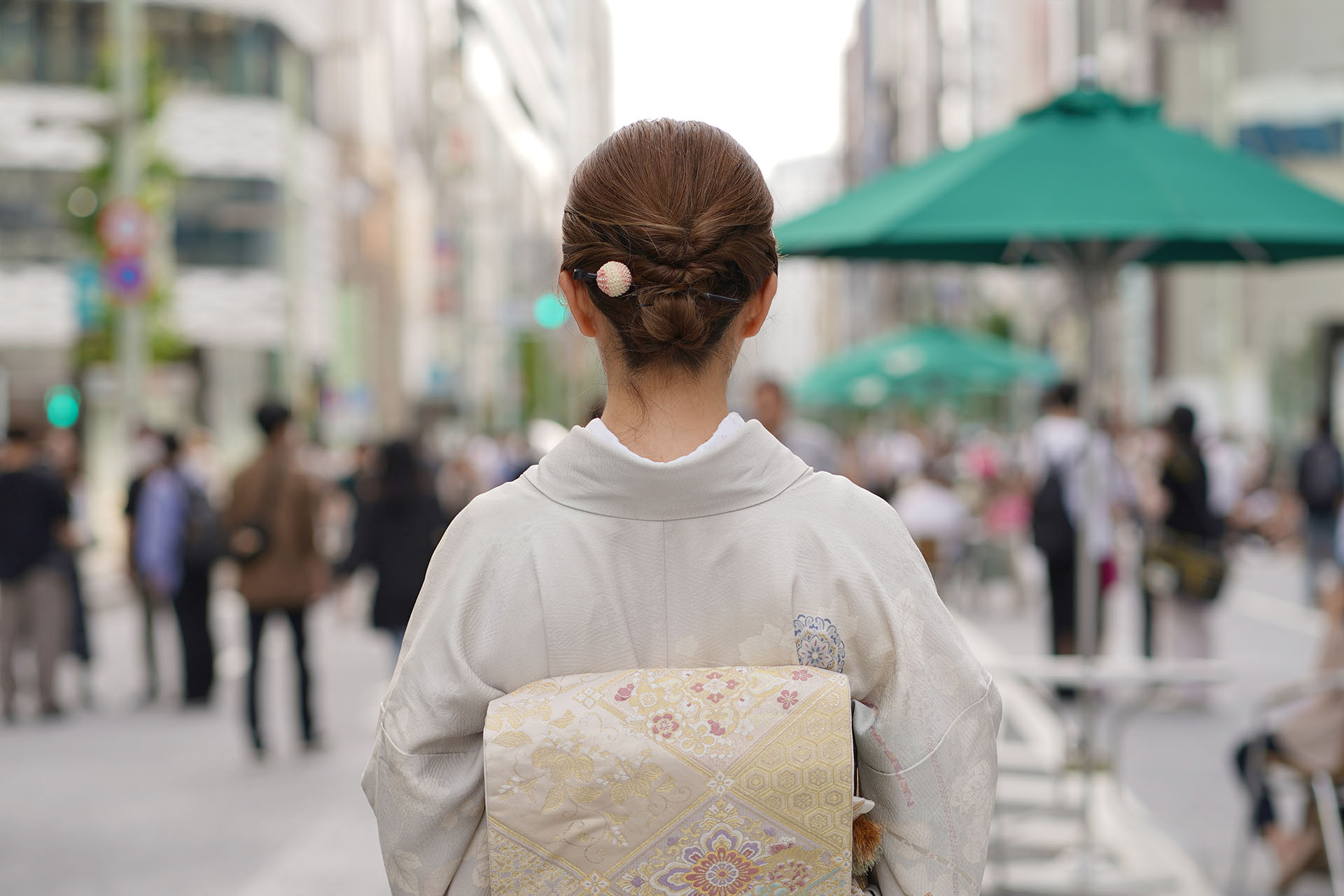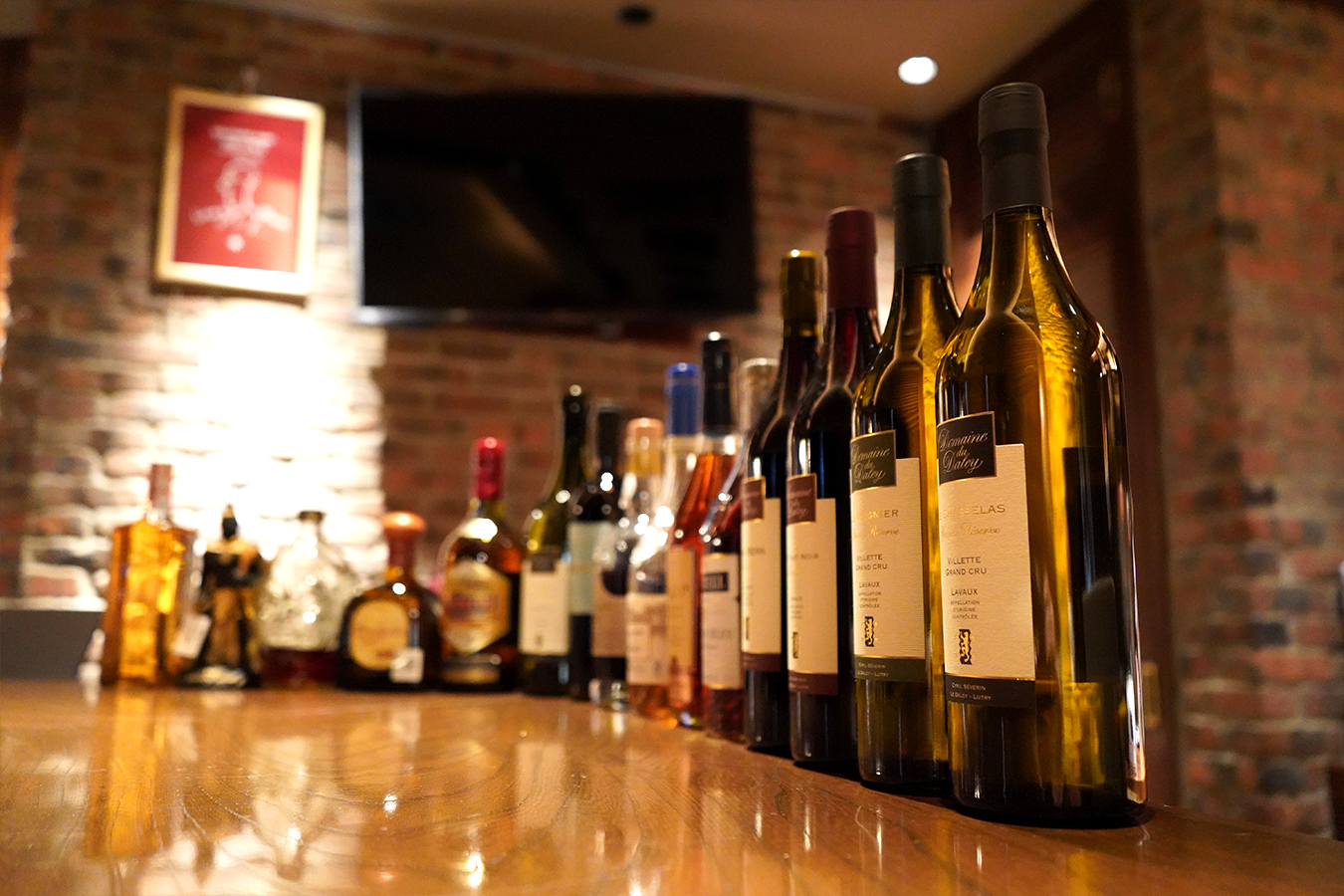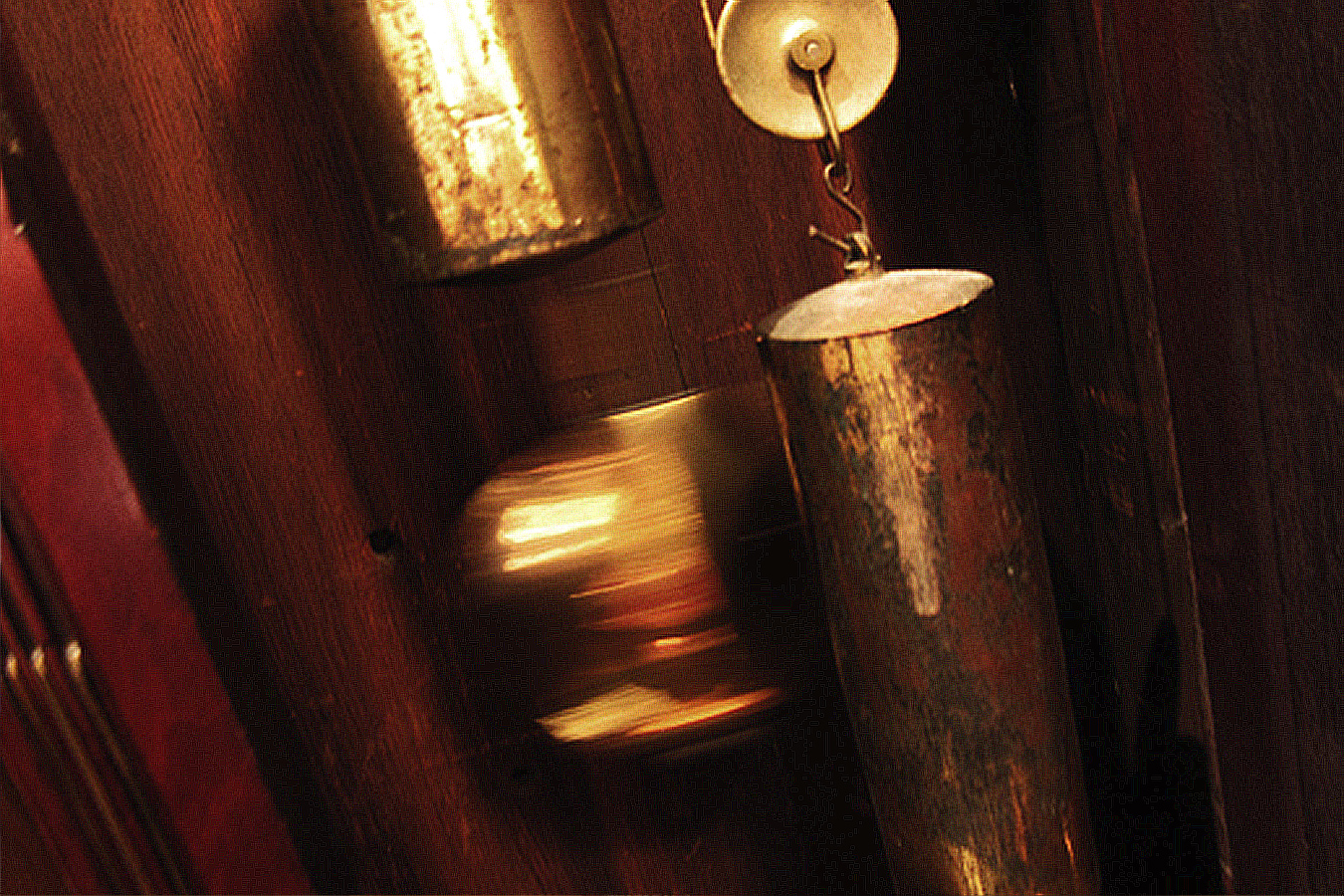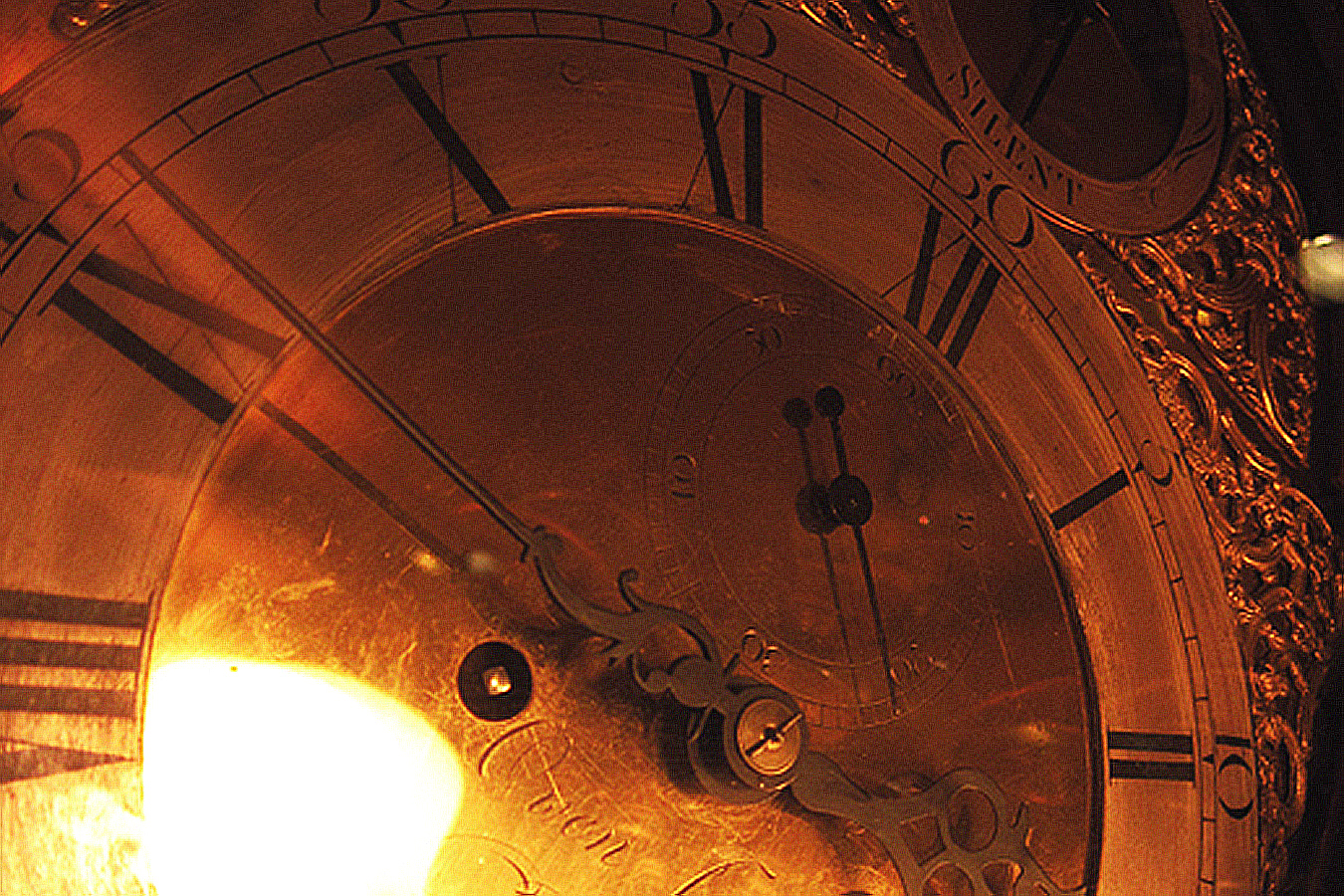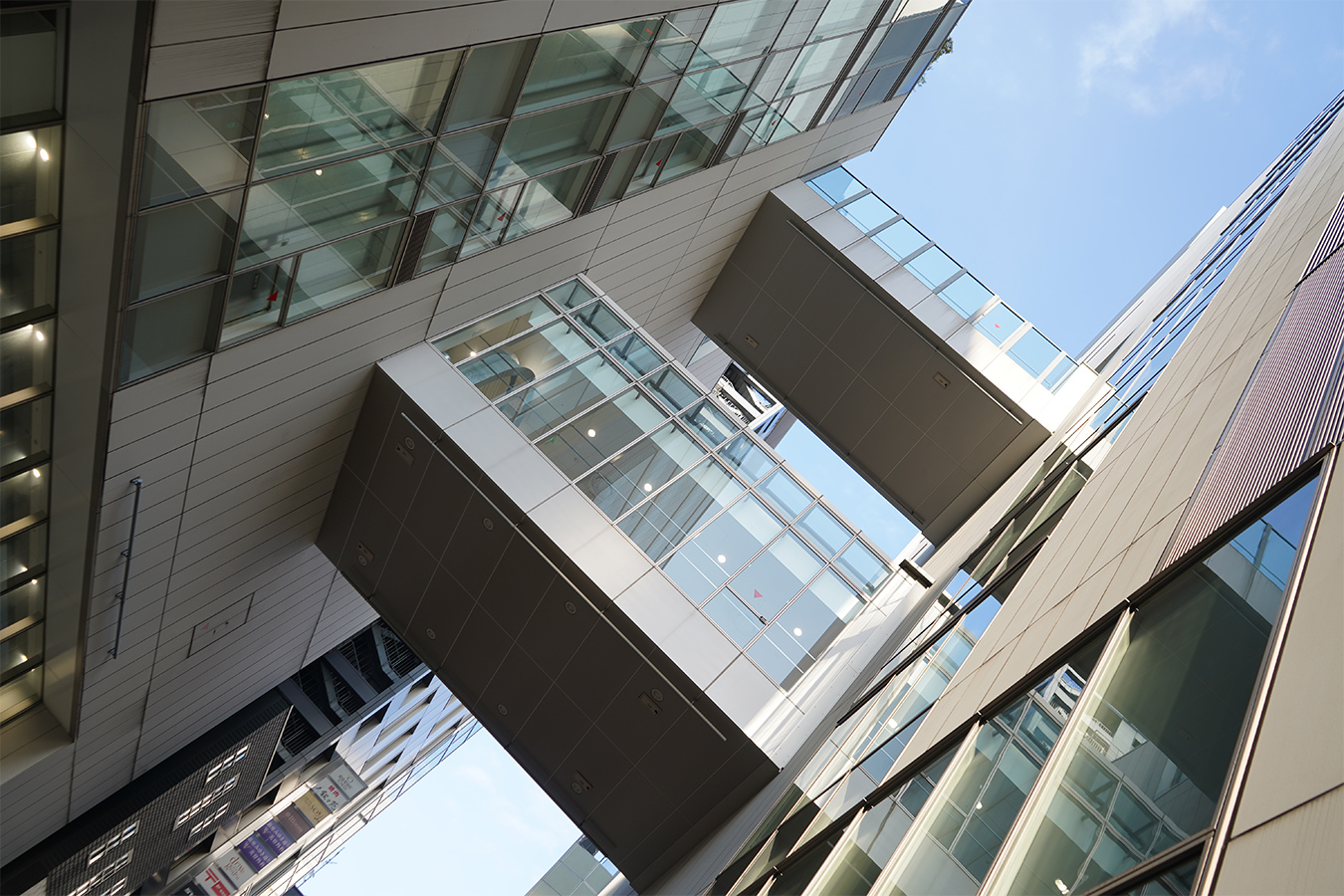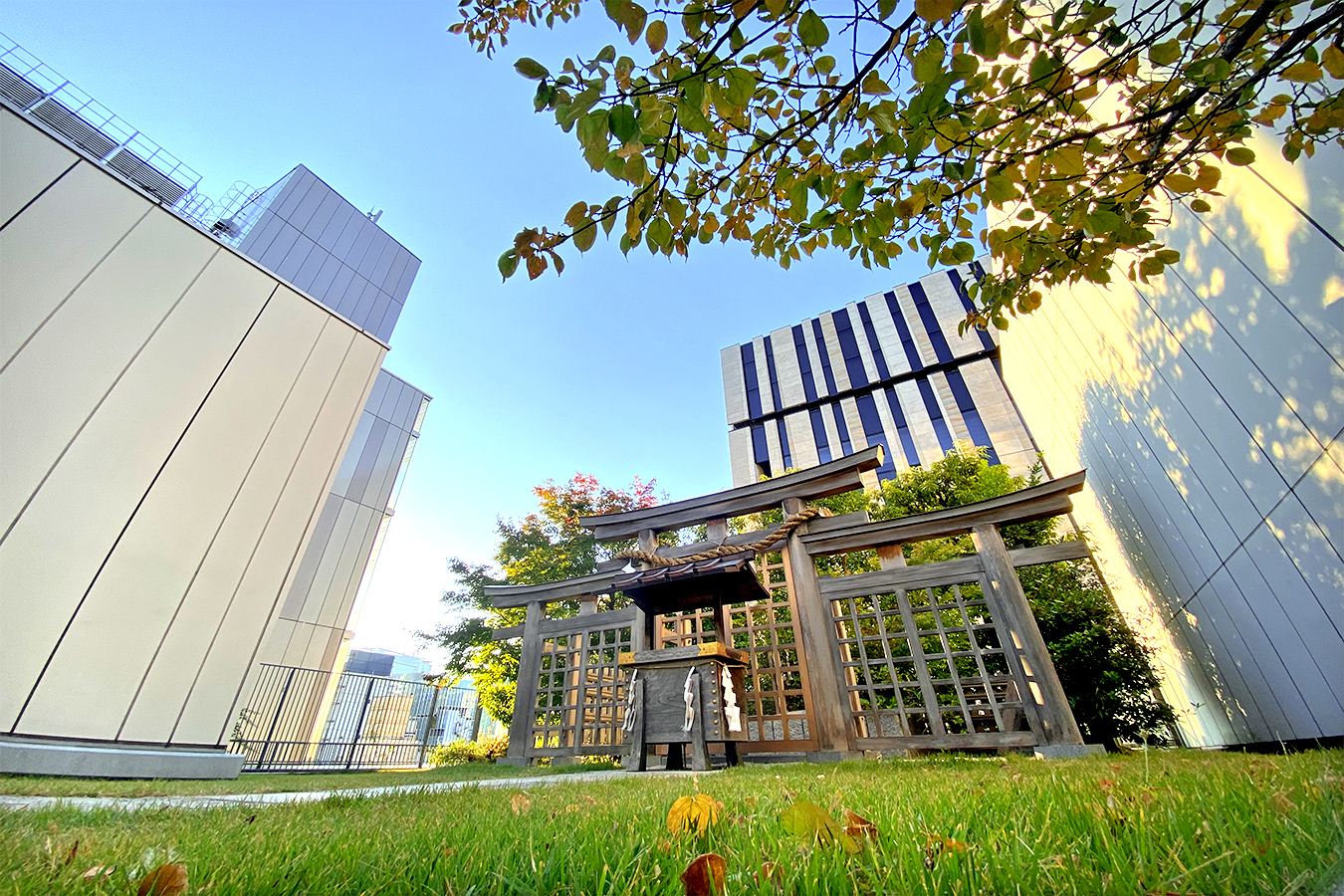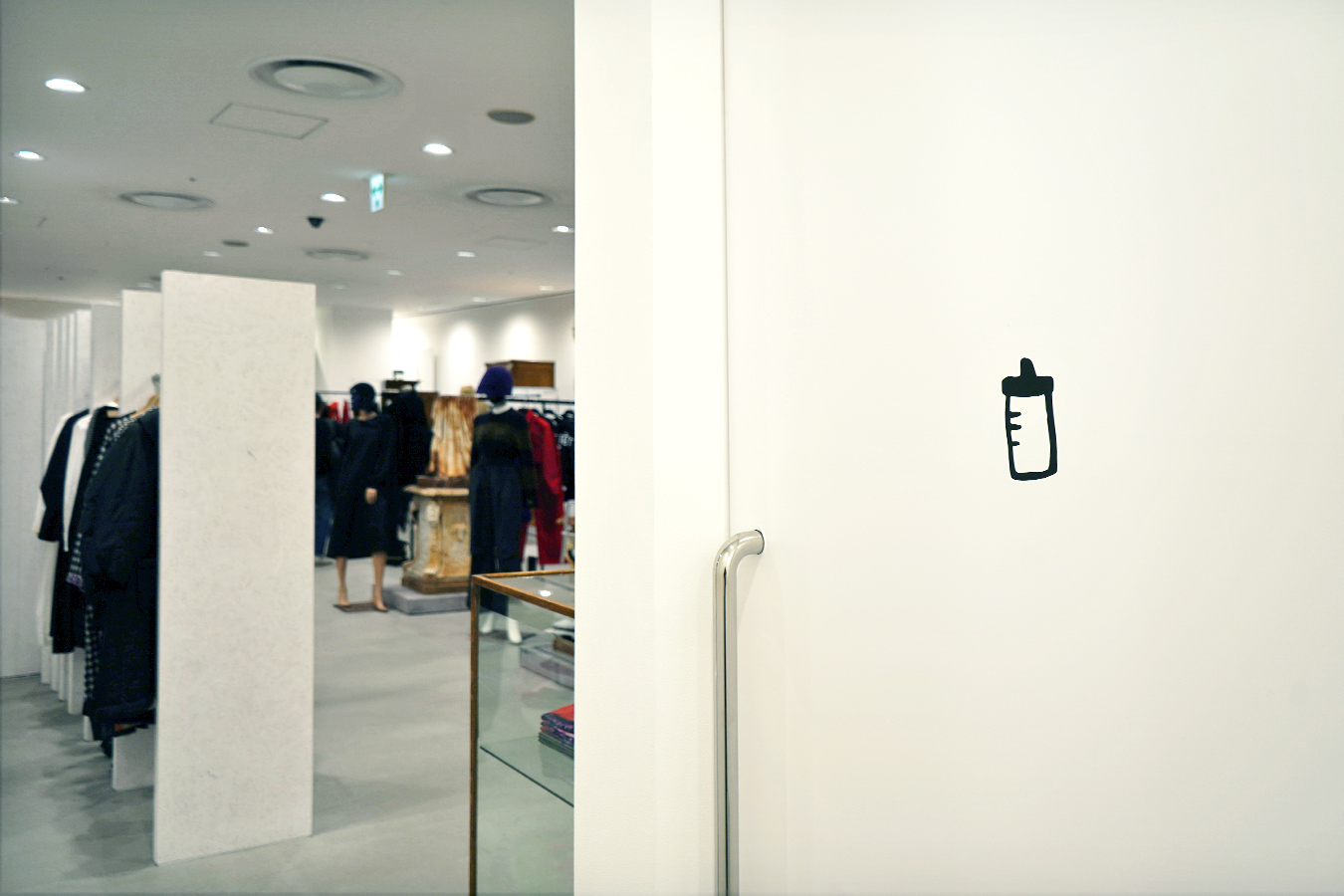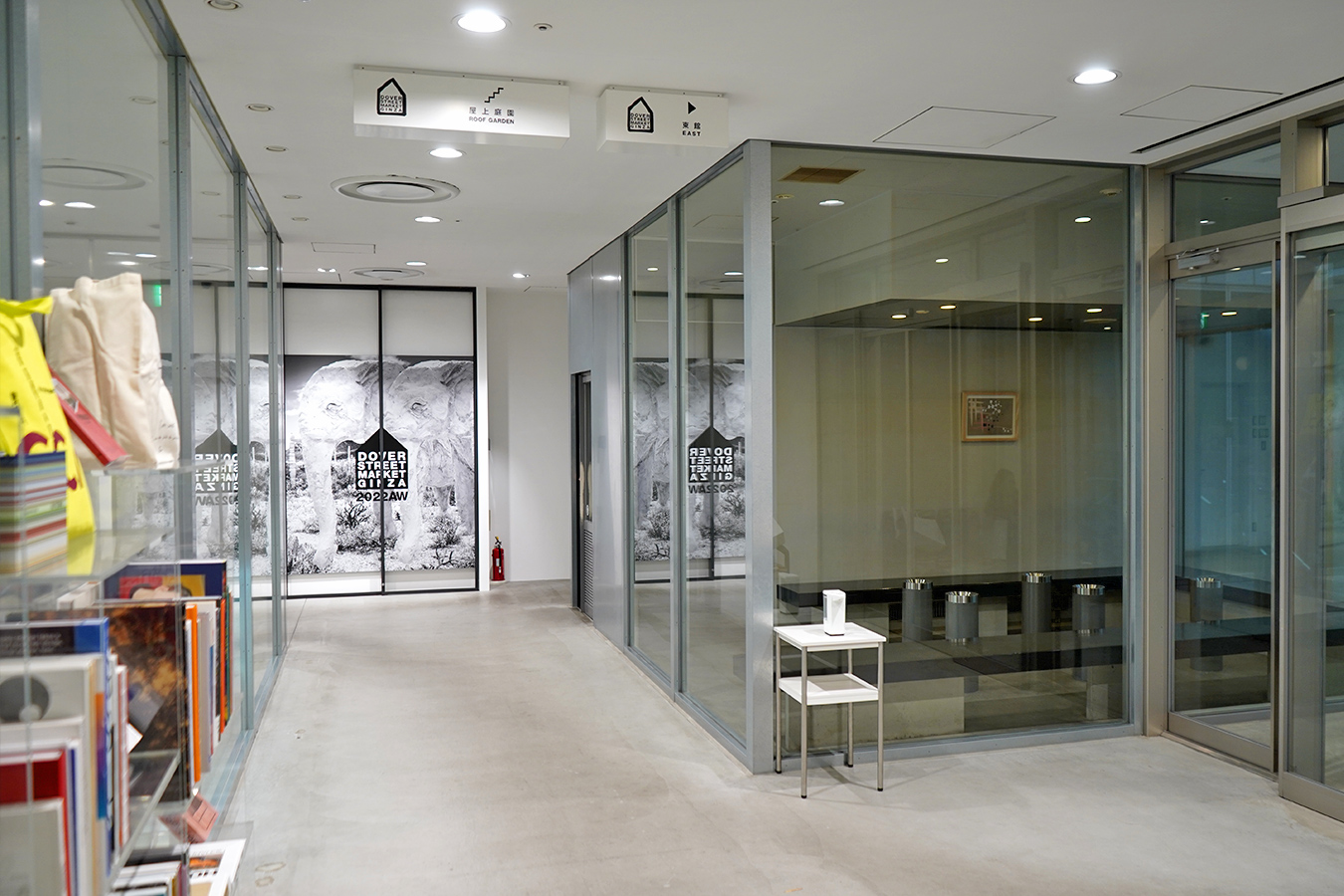-
I have created a logo and website
Hi. My name is Yuko Kimura, and I am a designer.I have been commissioned by Mr. Sei Kosaka, Executive Vice President of Komatsu Store, to create the logo and website for “Komatsu Bar” and “Komatsu Store“. Once I was assigned to a project, the first step is to gain a deep understanding of the brand.I visited Komatsu Bar and Komatsu Store, visited all the floors, and communicated with the staff on each floor to hear their daily thoughts on the concept of the stores, product placement, and how they work. In addition to the branding locations, I also visited Rose Bakery on the 7th floor of Ginza Komatsu, which is related to Komatsu Store, and Hibiya Matsumoto Tower, from which Komatsu Store got its name, to deepen our understanding of Komatsu Store’s history and culture. First I was asked to create a logo that would serve as a guideline for future branding.By redesigning the logotype with lines of the same thickness as those of the GINZA KOMATSU mark, I was able to create a simple, universal logo that is in line with the times. The Komatsu mark, with its center of gravity at the top, is placed larger than the text to create a cohesive look. Next to the logo, I created a business card.The old-fashioned icons are charming, and the business cards have a simple design that makes the most of the blank space. The colors are #eeeeee, a gray reminiscent of the concrete used at Ginza Komatsu, crossed with brown and dark green to represent the image of pine trees and express the depth of the long history. Next, I created the official website for Komatsu Bar, a members-only bar operated by Ginza Komatsu. For both the Komatsu Bar and the Komatsu Store, I chose #eeeeeeee for the...
-
Giving customers a quiet and blissful time to enjoy a glass
KOMATSU BAR is located on the seventh floor of Ginza Komatsu West, although you may not have noticed, since no signs or menus stand outside marking its presence. Please drop by and stand in front of its door, Notice the heavy iron handle attached to the thick wood and finely crafted frosted glass. If the round light above the door is on, that’s the sign that the bar is open. The bar counter is topped with a seven millimeter thickness of solid keyaki wood acquired from a store in Kyoto specializing in decorative timber. In addition to beer, a range of other spirits are available, including Laphroaig Scotch whisky, Blanton bourbon, and Hennessy cognac, and there is a modest wine cellar with a selection of wines that changes to from time to time. For those coming here directly after work, the bar offers meat and pasta dishes that will satisfy the hungriest of appetites, in addition to snacks like nuts and cheese. From the comfortable stools at the bar counter to the eclectic range of armchairs arranged at the tables, care has been taken to provide a venue where customers can choose the environment that suits their mood at the time. Walls of irregularly shaped bricks, warm music produced by tube amps, chairs offering different types of comfort depending on where you sit, and a reading corner reminiscent of a study, KOMATSU BAR’s interior is designed with the aim of providing customers with a place where they can feel comfortable spending time indulging in their own unique life stories, without having a sterile atmosphere forced on them that is devoid of character. Whether you’re on your way home from work in Ginza or you’ve just finished shopping with friends, come enjoy a blissful time away from the din and bustle of the city...
-
The spirit of craftsmanship imbued within a clock that marks the ages
The grandfather clock located in one corner of KOMATSU BAR used to adorn the lobby of the Fairmont Hotel in Chidori-ga-fuchi, Tokyo. From the guests who stayed at the hotel while commuting to the capital from other regions of Japan and the couples who held their weddings at the French restaurant Cerisier to the customers who had a glass at the English bar and the visitors to the tearoom Brasserie de la Verdure who shared their stories, all types of visitors to the Fairmont Hotel looked at this grandfather clock to check the time for meetings and departures. The timepiece was purchased by Takeo Kosaka, the operator of the hotel, around 1970 when he went to Britain in order to broaden his horizons. An antique lover, Kosaka discovered the grandfather clock after looking around several of London’s antique markets. It was another era back then, so it took considerable time and expense, not only to go to Britain in the first place, but in order to purchase the grandfather clock and transport it to Japan. Even after being placed in the hotel lobby, the grandfather clock required the time and effort of many because it needed more day-to-day maintenance than electric or quartz clocks. The clock was powered by a spring and weights, so it would stop if it was left unattended. Someone among the staff at the hotel had to take continual care of it. On a regular basis, the spring had to be wound and the weights cleaned carefully, as dust and heat could cause the clock to lose time. After being shaken by an earthquake, someone had to check that the clock hadn’t stopped. Today’s electric clocks, quartz clocks, and atomic clocks are much easier to maintain. Admittedly, we may have occasionally considered upgrading from this labor-intensive grandfather clock...
-
Fairmont Hotel grandfather clock keeps ticking at KOMATSU BAR
The cherry blossoms ofChidori-ga-fuchi (Imperial Palace moat)Began to bloom Such a three-line ad was placed in the newspaper each year at the start of the cherry blossom season by the Fairmont Hotel, which Komatsu Store operated from the hotel’s opening in 1951 until it finally closed its doors in the winter of 2002. Many people are still very fond of Yumi Matsutoya’s song Furu Toki (Time Passes), the tenth track on her album “Reincarnation,” which is about watching the four seasons from Fairmont Hotel’s tearoom Brasserie de la Verdure. Some praise the song as giving the same feeling as watching a movie. The Fairmont Hotel was long loved by our guests, with its classical, stately exterior, lighting that created a relaxing atmosphere, the lobby furnished with green sofas, the grandfather clock, and other antiques, the wooden sashes on the room windows, the sunny pool on the roof, and the hotel letter pad with its cherry blossom design. Even now, we occasionally hear from former guests who spent time at Fairmont Hotel back then. One of those fond memories is the picture book, Haikei, Sakura Saku (“Hello. The Cherry Blossoms are Blooming.”) compiled in 1995. Haikei, Sakura Saku (“Hello. The Cherry Blossoms are Blooming.”)Editor: Keisuke NagatomoPainting: Seitaro KurodaPoetry: Shinzo HigurashiCollaboration: Fairmont Hotel Even now, there still appear to be people wanting to buy this picture book, which has gone out of print. Interwoven with beautiful poetry by Shinzo Higurashi and gentle paintings by Seitaro Kuroda, it concisely expresses the sorrow of being unable to be with the one you love. It contains the following verse. “Unafraid to bloomdespite knowing it will fall” This echoes the approach Komatsu took to facing its future. While Fairmont Hotel and the department store Komatsu Store may have closed their doors, Ginza Komatsu is now making...
-
New creature = New building: nhale and exhale
Ginza Komatsu is honored to now have UNIQLO’s newest and largest global flagship store occupying floors one through twelve of the East Wing and, in the West Wing, Dover Street Market Ginza, occupying floors one through six, as well as Rose Bakery’s third store in Japan and the Komatsu Store-operated KOMATSU BAR in the dining area on the seventh floor. Previously, Komatsu Store consisted of a main building and an annex, which, when taken together, meant that the store faced the three streets in central Ginza. The main building, located at 6-2-3 Ginza, Chuo-ku, Tokyo, faced the Ginza main street Chuo-dori and Suzuran-dori, a side street situated in the direction of Yurakucho. The annex, located at 6-4-1 Ginza, Chuo-ku, Tokyo, faced Suzuran-dori and West 5th Street. When we decided to embark on the Ginza Komatsu project, we considered how to leverage its location. With the intent of preserving for posterity some of the history and tradition of the previous Ginza Komatsu buildings, we christened the new buildings standing on the sites of the former Ginza Komatsu main store and Komatsu Annex with the names Ginza Komatsu East and Ginza Komatsu West, respectively. The new Ginza Komatsu has received certification as a single site, so the buildings on two separate blocks are recognized as one block for regulatory purposes. “Certification as a single site” is a system for recognizing exceptions to constructions standards, which, in principle, stipulate that one building is situated on one site. It is applied in cases where a designated public agency has certified that there are no issues having to do with safety, fire prevention, or sanitation as regards the location or structure of the buildings, based on the application. When this system is applied, it provides greater freedom in design, but also includes a high burden...
-
A “Shrine in the Sky,” where you can rest and take in the refreshing air
From the seventh floor of Ginza Komatsu West an external stairway leads upwards to a rooftop garden. We have put in grass and made a walkway in this sunny area to encourage people to stroll here. In one area, a shrine we used to call Ginza’s “shrine in the sky” (Tenku Jinja) during the Komatsu Store era now stands in renewed form. When planning out the shrine and rooftop garden, in accordance with the tradition of the emperor standing facing south, we placed a sacred iwakura stone on the northern side of the rooftop site and made three torii gateways, representing the three torii gateways of Omiwa Shrine. For the torii gateways, which symbolize the spiritual kekkai barriers separating the secular world of man from the precincts of a Shinto shrine, we used the wood of three hundred year-old Japanese Kiso cypress trees from Mt. Ontake, which is also used when rebuilding shrines at Ise Shrine. Reflecting the fact that Omiwa Shrine is considered to be the whole of the mountain known as Mount Miwa, behind the torii gateways we have encircled the iwakura stone with Japanese nagi trees, sakaki trees, and mokkoku trees. Since the Vermilion Bird (Chinese phoenix), one of the four mythological creatures in Chinese astrology, is known as the protector of the south, we planted moso bamboo and paulownia trees on the southern side, commemorating the story of the phoenix, which is said to have lived in a bamboo forest eating the fruit of the paulownia tree. We built the approach to the shrine together with the children of the local Taimei Elementary School in the traditional way, using Fukakusa soil from Fushimi in Kyoto, which is thought to be best for making hard-packed dirt floors. In the sense that it links tradition with the future,...
-
Creating a convenient environment that welcomes all shoppers
Ginza Komatsu provides a nursing room on the fourth floor of the West Wing as well as the UNIQLO baby changing room on the seventh floor of the East Wing. Designated by UNIQLO as the kids’ floor, the seventh floor is where nursery teachers and staff licensed as kindergarten teachers play with children and carefully keep watch over the entire floor to make sure no children have lost their way. Of course, as they also have the role of advising customers on children’s’ clothes, they also assist with shopping for children’s’ items. The baby changing room is also fully outfitted with space for nursing and changing diapers. Ginza Komatsu believes that a nursing room is not just a place where mothers take care of their babies. Sometimes it is the father who prepares the formula and gives it to the baby. At other times, it could be the grandparents, a babysitter, or a childcare professional. All customers who come to Ginza Komatsu are important. Komatsu holds firm to that belief, and has installed a nursing room on the fourth floor of the West Wing that men can use without feeling self-conscious. In the past, nursing rooms tended to be installed in women’s restrooms and consigned to the remote recesses of the floor. To make it easy for people who need to use it, we have situated the nursing room where it can be easily reached while shopping, and given it a simple, white-themed interior. Komatsu Store pays rent to Ginza Komatsu in order to maintain the space for this nursing room, which is equipped with a diaper changing table, baby formula heaters, and two chairs. Each person goes through various stages of life—including birth, entering and then graduating from school, finding a job, getting married, having and raising children, and...
-
Smoking area shows Komatsu’s commitment to ensuring all are welcome
Ginza Komatsu West has a smoking area on the seventh floor. The emphasis on preventing exposure to second-hand tobacco smoke, or environmental tobacco smoke (ETS), is changing. Provisions for the prevention of exposure to second-hand tobacco smoke were incorporated into the Health Promotion Act that took effect in 2003. In 2005, the WHO Framework Convention on Tobacco Control (WHO FCTC) came into effect, and the Guidelines on Protection from Exposure to Tobacco Smoke were adopted during the second session of the Conference of the Parties to the WHO FCTC held during June and July of 2007. Accordingly, the number of places where people can smoke is steadily decreasing, with many places turning themselves into non-smoking areas, or existing smoking areas being eliminated. Even in Ginza, the ashtrays that had been placed at regular intervals along Chuo-dori were all removed in 2011. So why has Ginza Komatsu set up a smoking area in the midst of this no-smoking trend? It is for the simple fact that our customers are made up of both smokers and non-smokers. There is a nearby establishment called Ginza Kikusui that and has seen much of the history of tobacco sales in Japan since it was founded in 1903, over a century ago. Specializing in tobacco and smoking supplies, Kikusui stocks a wide array of pipes, cigars, tobacco, and other related goods. Also located in Ginza is the Japanese headquarters of the world-renowned brand Davidoff, which deals in cigars, pipes, smoking supplies, and perfume. Attitudes towards smoking vary greatly depending on one’s environment and preferences and tastes, and it is not the place of Ginza Komatsu to judge. Neither do we intend to discriminate against or segregate our smoking or non-smoking customers. That is why we decided to provide a smoking area. When considering the needs of...
